The hardest-worked lorries of all
Posted by Chris Graham on 19th September 2023
Nick Baldwin looks at some of the hardest-worked lorries of all, starting with a personal trip down memory lane.
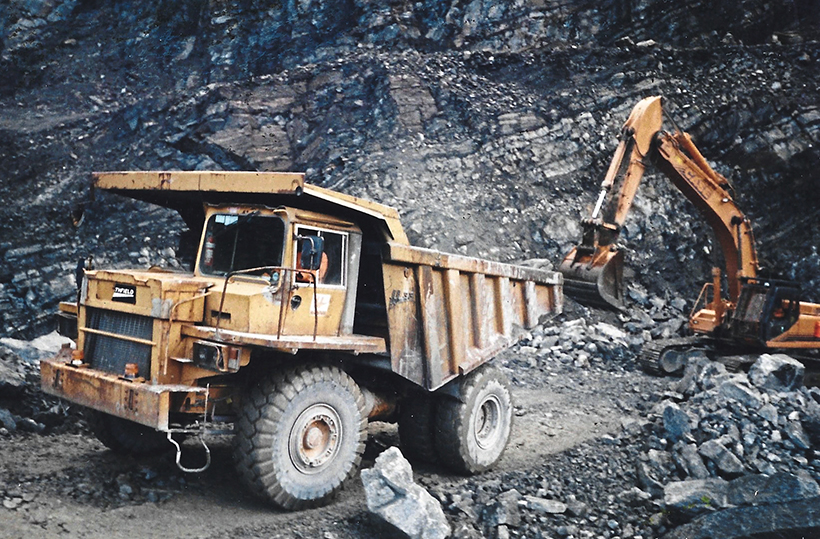
The hardest-worked lorries: Bray Valley Quarry in Nottinghamshire used this 25-tonne Heathfield, which Nick was lucky enough to sample in its prime.
My earliest memory of riding in a heavy lorry came during a fly-fishing trip with my father, in the school holidays. One of his jobs with the Rover Co of Solihull was calling on dealers to report back on product or customer problems. HQ must have wondered why dealers in mid-Wales, the Lake District, Hampshire and Scotland saw a lot of my father in the trout season!
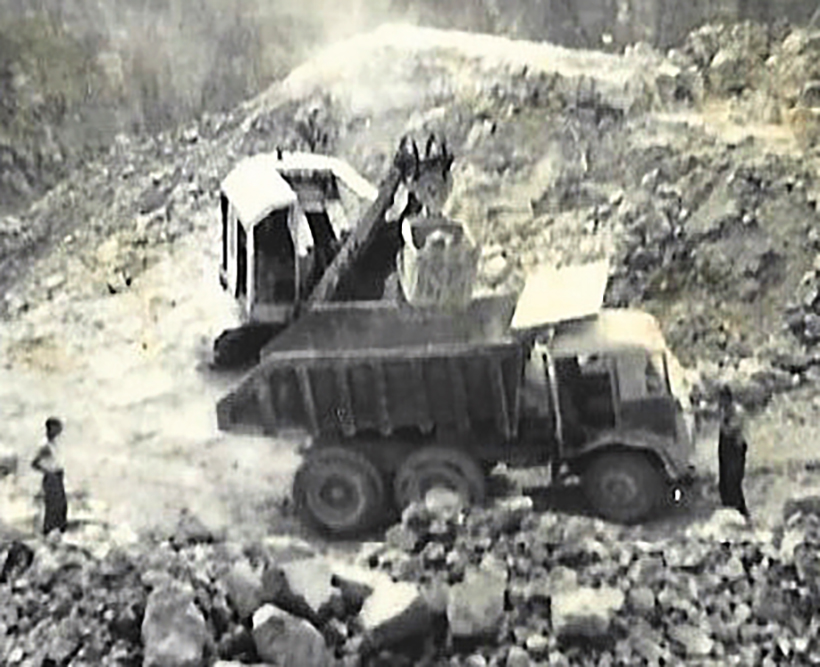
The Foden at Harrison Limeworks, Shap, in which Nick enjoyed a memorable trip.
Anyway, there we were near Shap, on our way to Scotland, when father called in for another of his enthusiasms, a foaming pint of local ale. He overheard a conversation between a farmer and a quarry owner about their respective Land Rover and Rover challenges with a local dealer. My father’s ears pricked up and he promised to investigate the matter. Everyone was happy with the outcome and on our return, we stayed with the farmer and were shown around the quarry owner’s Harrison Limeworks.
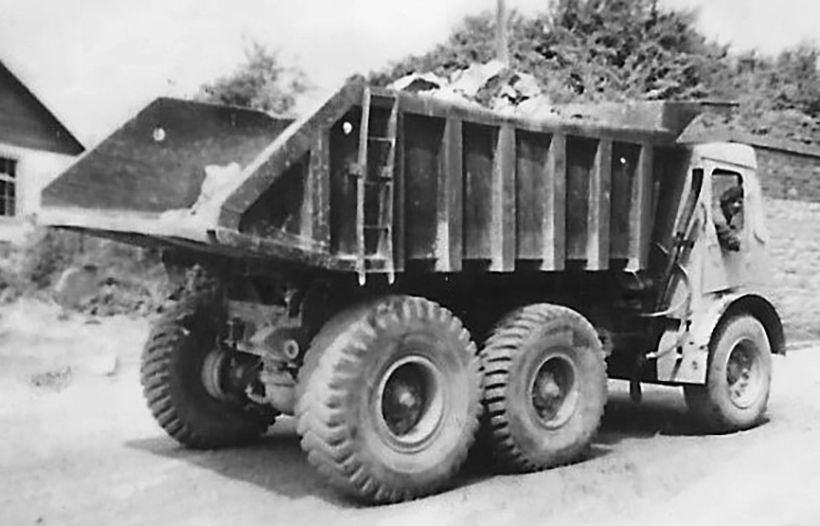
The Shap Foden reaches the crusher with the driver’s head out of the cab to avoid the fumes and noise.
It was then that I got my memorable trip in a six-wheel Foden dump truck, and marvelled at the way in which the driver, who had lost his right hand in an accident, fought with the steering wheel via a ball joint strapped to his right arm while wrestling with its 12-speed, two-lever gearbox with his left hand. We descended the steep haul road into the depths of the quarry where a mighty excavator dropped huge rocks into the heavily-ribbed body which was complete with cab protection and scow end. The shock loads on us and the poor elderly Foden were enormous, and then began the grind back up to the crushers.
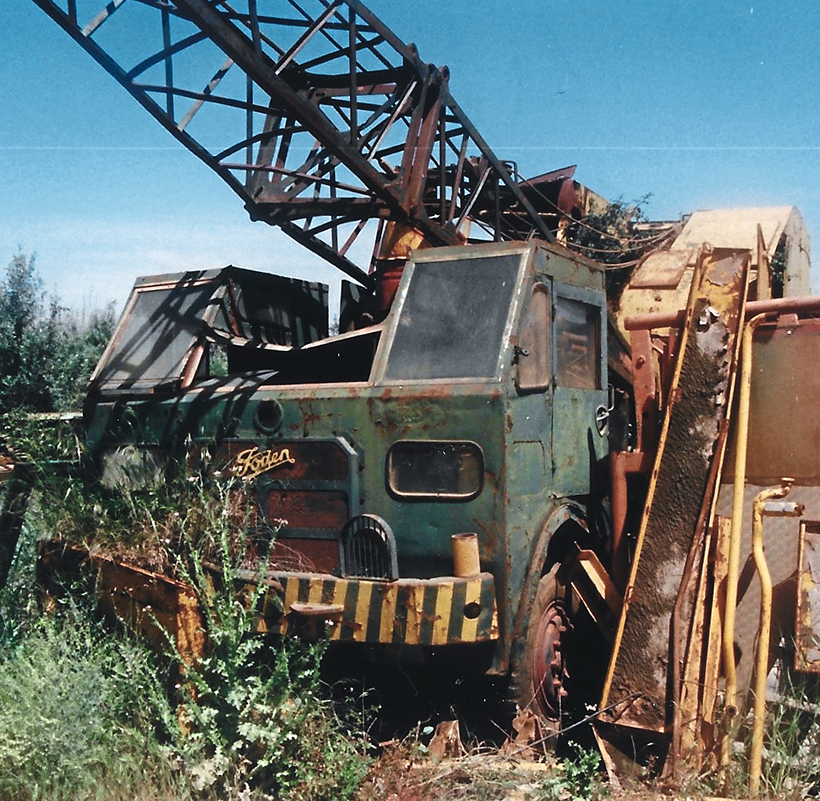
In a marble quarrying area in Portugal, this Ruston-Bucyrus on a Foden lifted out the slabs until 2002.
On the way back up the driver told me about the fleet of Mann steam tippers that had preceded the diesel Fodens. Apparently they sat around on the lip of the quarry for years afterwards, and were then pushed in and back-filled. Mark you, I’d heard similar stories at school in Malvern where my favourite visit was to Mr Hastelow, the Dodge dealer, who gave me his back numbers of the marvellous US Commercial Car Journal.

A quarry near Broadway, in the Cotswolds, used this AEC Dumptruk and massive 300hp Foden two-axle dumptruck.
He told me that all the sickly vehicles that he took in part-exchange were parked in an old quarry if they were too rough for resale, or had been stripped for spares. The upcoming Malvern Hills Conservators didn’t like this eyesore and forced him to bank-up the access road and plant it with trees. After that the landlocked vehicles (including steamers and an imperious Daimler limousine) were gradually covered with landslide and finally topsoil. There must have been some good stuff there, judging by the remains of the WW1 FWD and the WW2 Federal wrecker that had replaced it which Mr Hastelow had retained in his current fleet. Though I never rode in the Federal, I was let loose in the AEC Matador converted to a tipper that’s shown alongside.
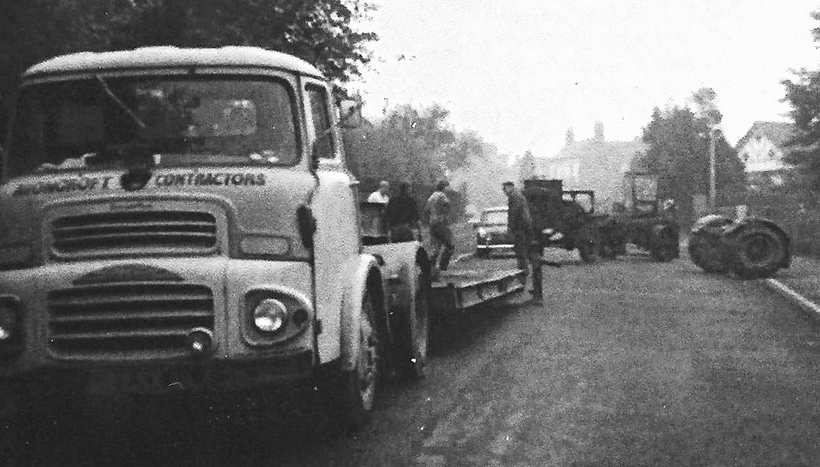
In the background is a First World War FWD similar to Mr Hastelow’s. We rescued it from a Worcester orchard with the venerable Albion and trailer with knock-out trailer axle.
Ex-military Matadors could turn their hands to most things but you really wouldn’t have thought that they would be ideal for quarry work – after all, 4×4 hasn’t been seen as an advantage on hard standing, whereas a driven and steered front axle is just another thing to wear out in quarry dust.
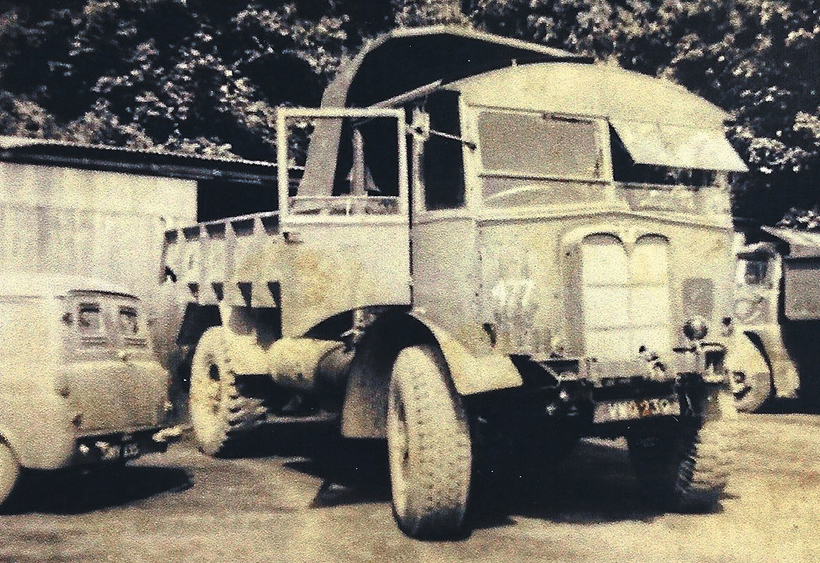
An unusual dumptruck created from an ex-military AEC Matador in 1959.
Mr Hastelow also gave me a small green book titled Arguments Against Dodge Trucks, which contained nothing but blank pages! He also pointed me towards another 1918-ish FWD that had been used for collecting tons of apples from a local orchard. With the aid of a block and tackle and an ordinary car, we managed to pull it from tree to tree until it was on hard standing where an Albion with low-loading machinery carrier was waiting. The driver jacked the rear of the trailer, undid a few bolts and knocked out the back wheels which exposed the beaver tail that he lowered to the ground before winching the FWD aboard.
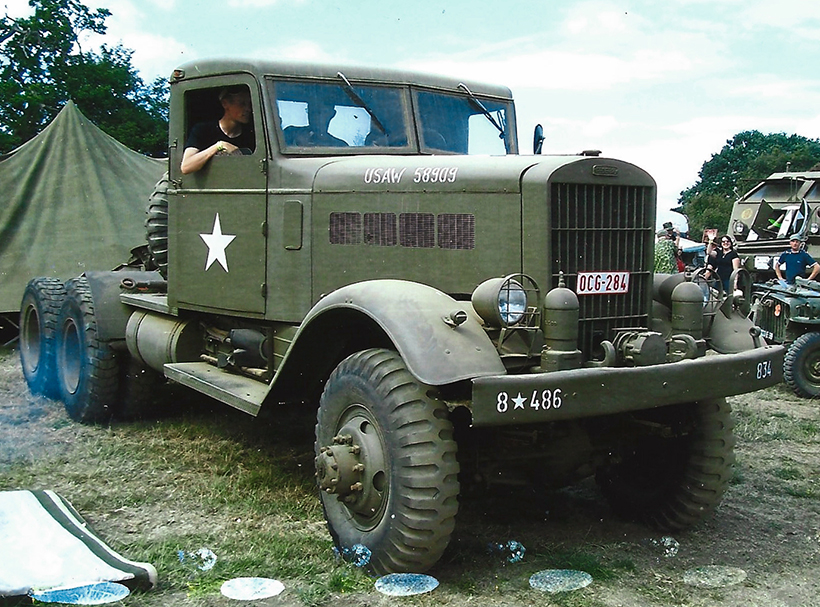
The Malvern Dodge dealer had a Federal like this one seen at a rally but equipped with jib and winch.
I thought I’d dig out a few more quarry-related relics, one at least of which seems to have had a happy ending. I’m referring here to BOD 792 that I first encountered at Bray Valley Quarry, owned by Mr Nott from near Barnstaple, back in the 1970s.
With little glass remaining and no doors or lamps, it looked as though it had reached the end of the haul road, but as the subsequent photographs show, it had a fortunate renaissance. From the placard with it, I learned that this was one of four similar 5LW-powered machines that, towing trailers, had built Chivenor wartime airfield in the Taw and Torridge estuary. Some of the hangars are still there and my favourite GT ale is brewed in one of them!
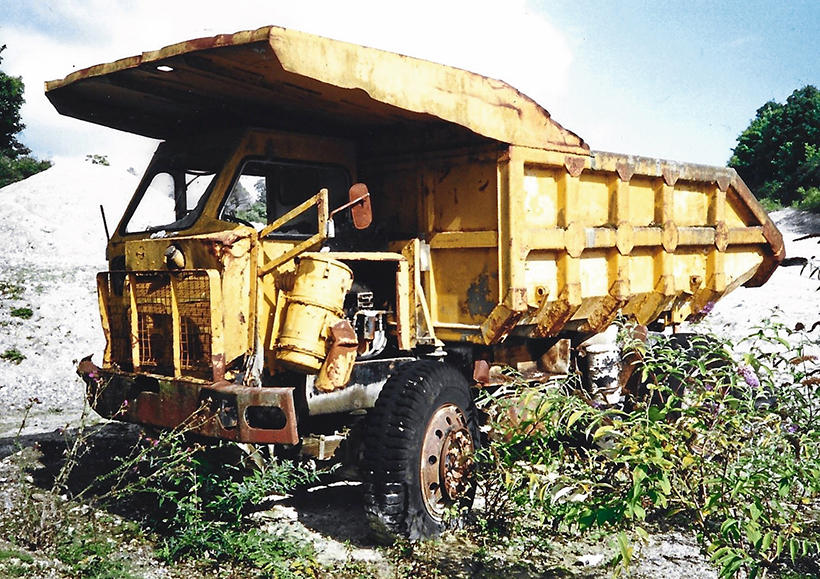
How quarry Fodens usually ended their days, pushed to the side of a pit and awaiting the gas axe.
By strange Foden coincidence, I subsequently went to Bray Valley Quarry for Truck magazine to road-test a Devon-built Heathfield 25-tonne dumptruck, which I seem to recall was powered by a Cummins 250hp diesel, although a 200hp Leyland was an option.
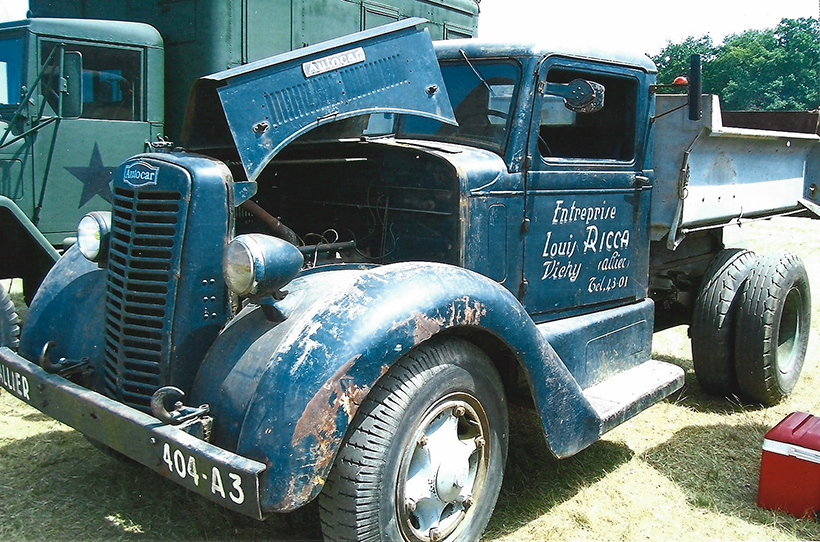
At the same Continental rally displaying the Federal was this remarkable late 1930s Autocar tipper.
I’ve written ‘2003’ on the back of one of the photos taken there, though I can’t help but feel that this was in the truck’s later life. Certainly, when I called there (now Hansons) recently, no-one had heard of Heathfields, and its place had been taken by Volvo ADTs – such is ‘progress’.
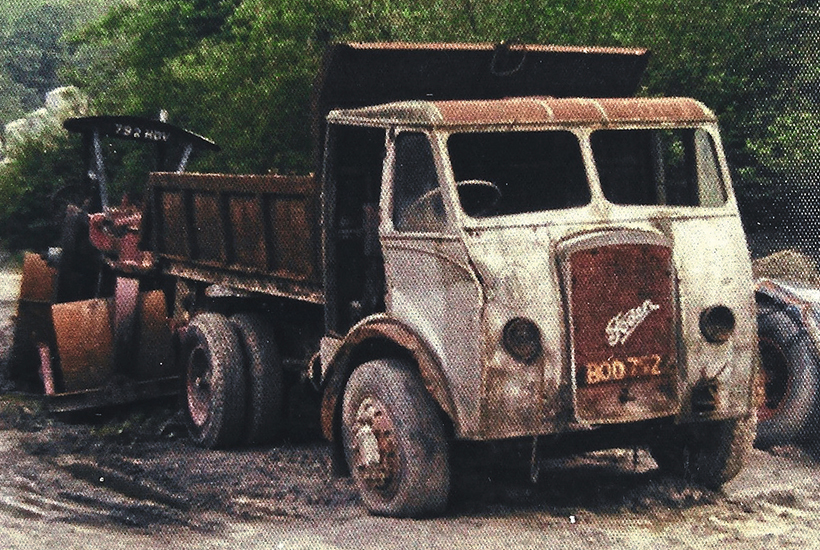
This 1936-registered Foden was seen at Bray Valley Quarry in the 1970s.
Talking of the then-new breed of giant dumptruck, I’ll finish on the Foden FR 6/45 unveiled in 1957, as a rival to the British-built Euclid. It was a little ahead of Aveling-Barford’s and AEC’s attempts, and was a 45-ton gross two-axle machine powered by a 300hp turbo-charged version of the Rolls-Royce 12.17-litre diesel made at the Sentinel Waggon Works in Shrewsbury. I encountered several of these giant Fodens working on the opencast iron ore being dug out of Wroxton Heath, near Banbury.
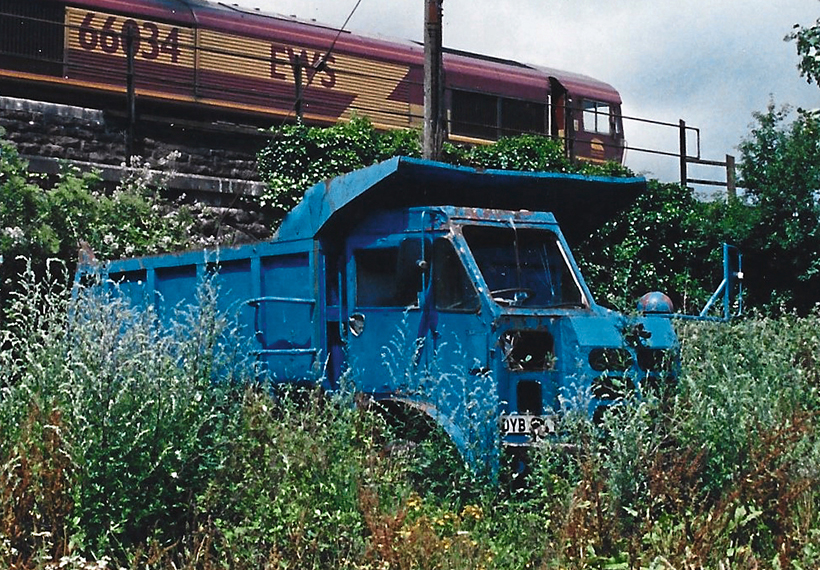
Yeomans stone-hauling loco passes a redundant Foden dumptruck in the Mendips.
Then a little pit between Chipping Campden and Broadway in the Cotswolds suddenly expanded downwards by some 100 feet, with the help of some AEC Dumptruk 6x4s and one of the big Fodens.
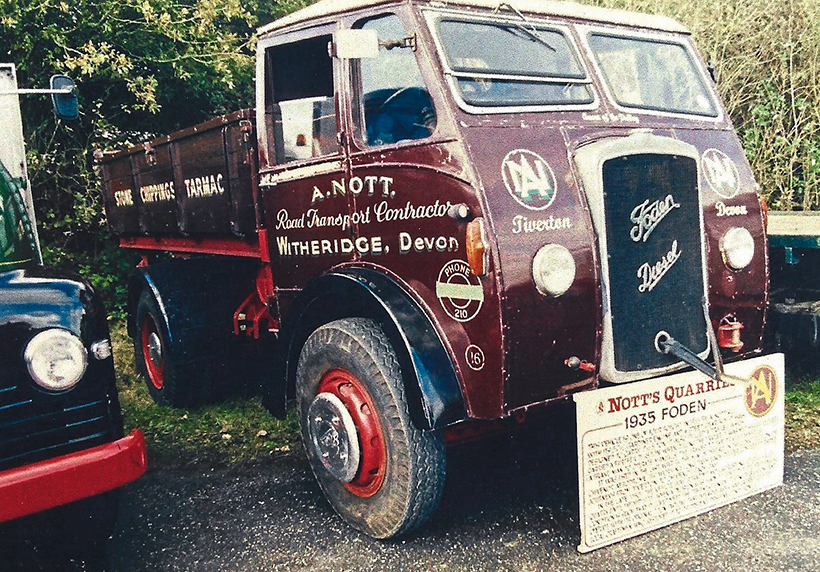
The Bray Valley Foden seems to have been manufactured in 1935 and, having helped build Chivenor airfield, has now been restored.
Incidentally, I believe that Foden intended to make its own engines for the FR in the shape of two of its FD6 six-cylinder two-strokes grafted side by side on a common sump. One of these was shown at the London Commercial Vehicle Show in 1954, where the engines were said to run in opposite directions with helical gearing to a single output shaft that was said to handle 252hp.
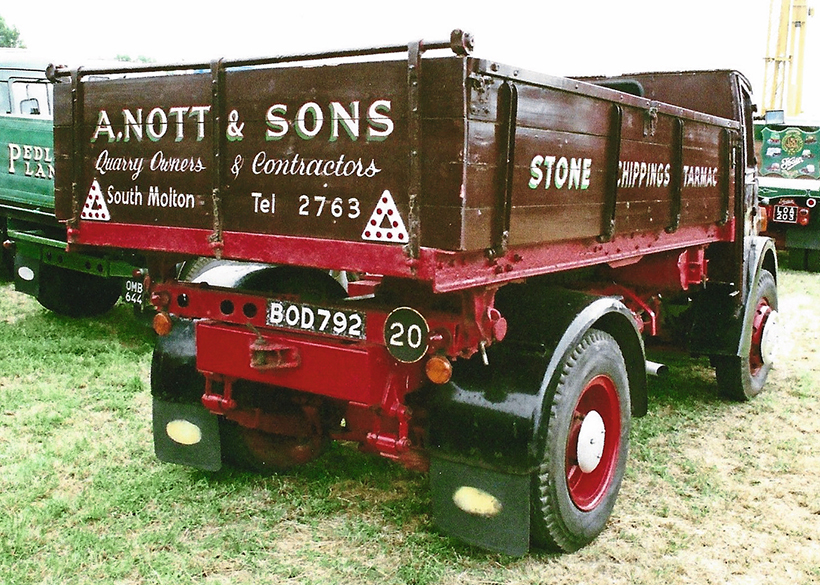
Nott’s Foden three-way seven-ton tipper at Smallwood Rally in 2006. It also hauled a trailer.
One can only imagine that this unit was too complex and expensive, and didn’t really provide enough power to lug its 45 tons out of a deep quarry. It would be interesting to know more about Foden’s experiments with this engine, and better still to know what it sounded like on full bark. It turned out that 250 and then 300hp were not enough and, by the end in 1960, the 400hp Rolls-Royce C8TFL was specified.
This feature comes from the latest issue of Classic & Vintage Commercials, and you can get a money-saving subscription to this magazine simply by clicking HERE

Previous Post
Joint 100th birthday celebrations for Welsh heritage railways
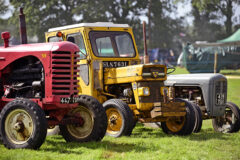
Next Post
Rural Past Times; what a show!



